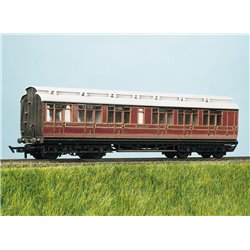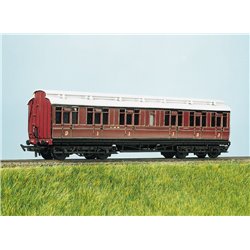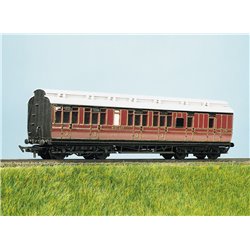Static grass puffer bottles work by manually charging model grass fibres with static electricity. When the charged...
No products
Product successfully added to your shopping cart
There are 0 items in your cart. There is 1 item in your cart.
Search Tips
Why are some passenger carriages configured as clerestory?
Clerestory carriages were a common style of passenger carriage in the late 19th and early 20th centuries, characterised by a raised roof section with windows along the sides. In the context of model railways, some passenger carriages are configured as clerestory carriages for historical accuracy and to add visual interest to layouts.
One reason that clerestory carriages were popular in the early days of railway travel was that they allowed for better ventilation and natural light. The raised roof section allowed for hot air to rise and escape, which helped to keep the carriage cooler and more comfortable for passengers. The windows along the sides also provided additional natural light, reducing the need for artificial lighting.
In terms of modelling, clerestory carriages can add an interesting historical element to a layout, particularly for those modelling the late 19th and early 20th centuries. Many model railway enthusiasts enjoy recreating the look and feel of the early days of railway travel, and clerestory carriages can be a great way to do this.
Additionally, some model railway enthusiasts simply appreciate the aesthetic appeal of clerestory carriages. The raised roof section and the rows of windows can add an interesting visual element to a layout and can make for an eye-catching addition to a collection of rolling stock.
Overall, while clerestory carriages are no longer in widespread use on modern railways, they remain a popular choice among model railway enthusiasts who appreciate their historical significance and visual appeal.
Click here to receive the tips weekly in your mailbox. You can unsubscribe at any time.










